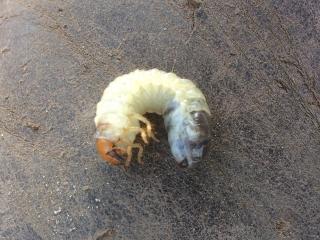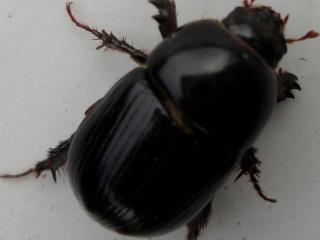African black beetle larvae (cockchafers) found in emerging barley
- Condingup
Research agronomist King yin Lui (DPIRD) recently found African black beetle (ABB) larvae (cockchafers) in an emerging one leaf barley crop near Condingup. A large proportion of the crop was yet to emerge so there was no visible feeding damage.
Cockchafers are usually found in proximity to kikuyu pastures, however in recent seasons many of the paddocks that have been reported as having cockchafers have been continuously cropped minimum tillage paddocks that are not near kikuyu pastures.
Crops after pasture are more likely to be damaged.
The ABB is a soil dwelling insect. Larvae are ‘C’ shaped, creamy-white with dark heads, have three pairs of legs on the thorax and can grow up to 25mm long.
The adults beetles are 12-14mm long, cylindrical and glossy black in colour.
Large populations of ABB adults and larvae can chew cereals and perennial pasture plant parts that are below ground, resulting in bare patches. Adults chew plants at or just beneath ground level, leaving frayed parts. Adults either chew right through the stem or ‘ring bark’ bigger plants.
The adult beetles can come to the surface at night but are usually very difficult to eradicate because they predominantly feed underground and avoid contact with surface applied insecticides. The insecticide needs to penetrate the soil surface where the larvae are.
For further information visit the DPIRD's Diagnosing African black beetle and Identifying soil beetle pests pages.
For more information contact research scientists Svetlana Micic, Albany on +61 (0)8 9892 8591 or Dustin Severtson, Northam on +61 (0)8 9690 2160.
Article author: Cindy Webster (DPIRD Narrogin).


